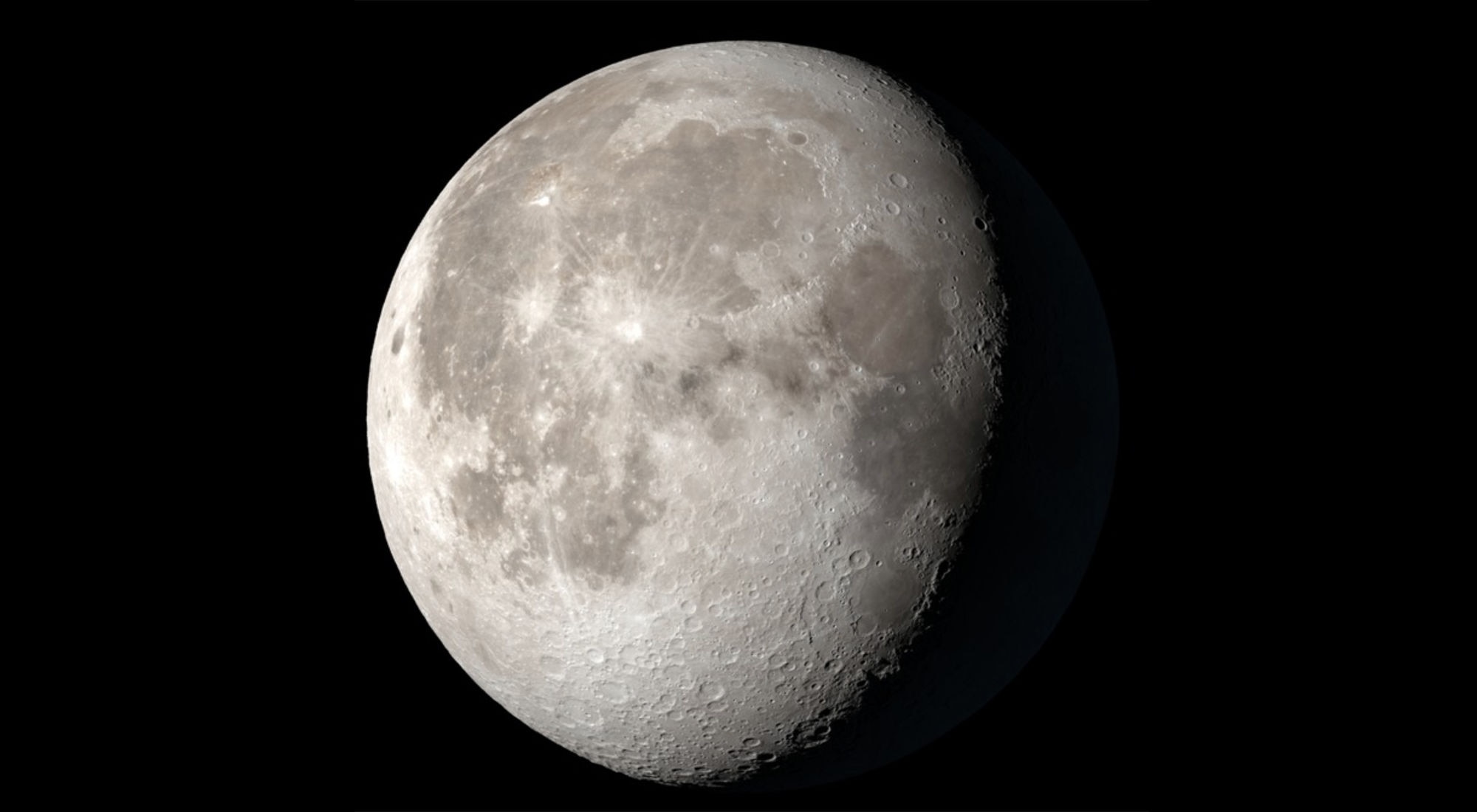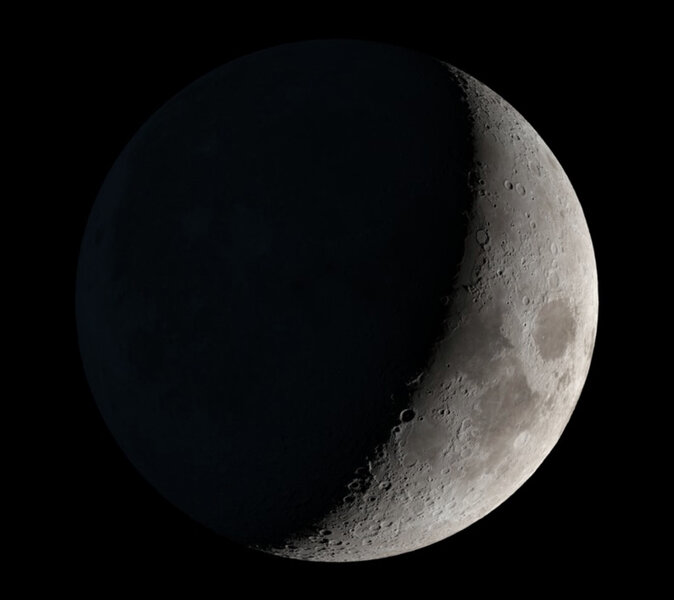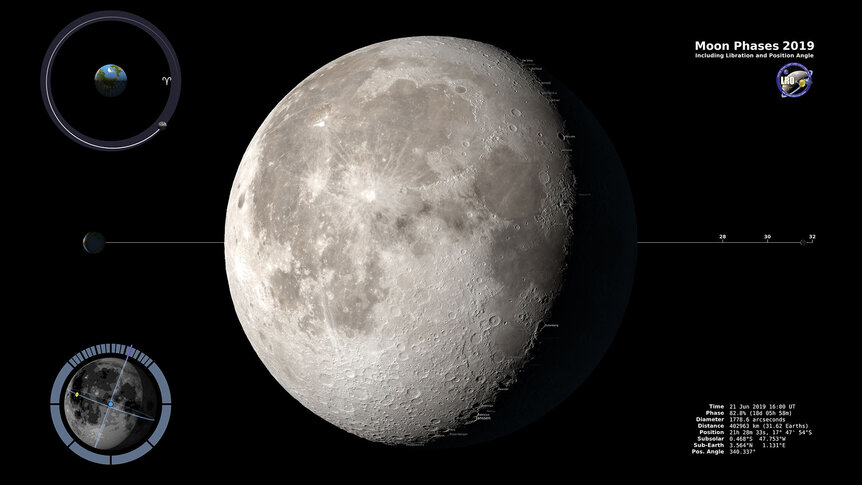Create a free profile to get unlimited access to exclusive videos, sweepstakes, and more!
The hour-by-hour phases of the Moon for all of 2019

Yay! The new NASA Dial-A-Moon phase calculator for 2019 is out!
Oh, I so love this thing. You enter a date and time (in UTC) and it shows you what the Moon will look like. The image generated is based on images and elevation data taken by the Lunar Reconnaissance Orbiter, which has been mapping the Moon since 2009. The calculator is a fun way to see what phase of the Moon will be visible at any time, which personally is useful for me when I need a good image of the Moon for an article.
But there's more. A lot more.
The calculator is done by the fantastic folks at the NASA Goddard Spaceflight Center Science Visualization Studio, who do a lot of tremendous work, well, visualizing science for us. They make wonderful graphics and videos, and I've used them for years both here on the blog as well as in my Crash Course Astronomy video series. Poking around their website will show you all kinds of fun things.
But back to the Moon… Every year they also put out an extremely cool video showing what the Moon will look like in terrestrial skies, together with a wealth of really nifty info about it.
There's quite a bit going on here, so let me explain.
In the center is the most obvious part: How the Moon appears in our sky, hour by hour, over the entire year of 2019. It may seem like all they need to do is the phase — the amount we see lit by the Sun versus the unilluminated part — but, as with all things in real life, it's a tad more complicated than that.
The Moon orbits the Earth on an ellipse. That means sometimes it's closer to us and sometimes farther away, changing by about 10% over one month-long orbit. So when it's at perigee (closest to Earth) it appears larger, and when it's at apogee (farthest from Earth) it's smaller. You can see this periodic change in the Moon's size as the video progresses.
But that elliptical orbit is also tilted with respect to the Earth's orbit around the Sun! When the Moon is south of that line, perspective allows us to see a little bit over the lunar north pole (like we're looking down at it from a slight angle above it), and when it's north of the line we see a little bit past the south pole. This is called nodding — a great term — and again you can see it as the Moon's face moving up and down over the course of a month.
And there is still yet more. The Moon's rotation is locked to the period of its orbit around the Earth; that is a natural consequence of gravity, tides, and time, and happens to every moon of every planet eventually. Because of this, we only see one side of the Moon, what we call the near side. The far side is forever hidden… except not entirely. As I already said we can see a little past the poles due to perspective.
However, the Moon's rotation is synched to the period of a complete orbit. But when the Moon is closer to the Earth it moves a little faster, and when it's farther out it orbits more slowly. The rotation stays the same, so they aren't perfectly synched up at any given moment. When the Moon is closer to us it's not rotating quite as quickly to keep up with that more rapid orbital motion, so we get to see a little bit past the eastern edge of the nearside. When it's at apogee it's rotating faster than the orbital motion, so we see a little bit into the far side on the western edge. This is called libration, and it's like the Moon's face is rotating slightly left-and-right.
Together, all these motions — nodding, libration, and size change due to distance —create that mesmerizing dance the Moon's face undergoes every month. I find it quite soothing.
There are other pieces of info in the video, too. Behind the Moon's face is a representation of the Earth and Moon with a line between them. The basic info shows the Moon's changing distance over an orbit; the numbers on the right give the distance to the Moon in units of Earth diameters (about 12,740 kilometers). Moreover, you can see the phases of both the Earth and Moon change over the orbit; in this piece of the video it's like we're following the Earth and Moon as they together orbit the Sun. When they both appear full the Sun is behind us, and when they both appear new (their disks are all dark) the Sun is on the other side of them.
If you set the video for January 6, 2019, for example (keep your eye on the info on the bottom right to do that), the Earth is half lit on the right, as is the Moon; the Sun is far off to the right. At that time, the side of the Moon facing the Earth is dark, so it appears new (and sure enough, the big Moon phase part of the video shows it as all dark). Someone on the Moon, though, would see the Earth as fully lit.
That part is a little tough to picture, but the inset animation at the upper left helps. It shows the Moon and Earth highly compressed in space. At that same time of Jan. 6, the Sun is at about the 5:00 position, to the lower right. You can see that from the Earth the Moon would be dark, and from the Moon the Earth is lit.
The curly symbol to the right is the direction to the vernal equinox, a spot on the sky where the Earth's orbit projected on the sky intersects the Earth's equator projected on the sky. I know, that's a bit complicated, but think of it this way: When the Sun is in that direction, it's the March equinox on Earth. Fast forward the video to about March 21, and you'll see the Earth's lit half is pointed in that direction, so that's the direction toward the Sun… and not only that, the Earth's north pole sits right on the day/night dividing line! If you set the date to June, you'll see the north pole is in constant daylight, and set it to December and it'll be in constant nighttime. Pretty cool.
The bottom left inset shows several things. The blue spot is the point on the Moon directly under the Earth, called the sub-Earth point. If you were standing there the Earth would be directly overhead, at your zenith. That's also the exact center of the Moon's face. The two blue lines show the Moon's equator and 0° longitude line, and those move relative to the sub-Earth point due to nodding and libration (or, if you prefer, the sub-Earth point moves relative to the Moon's lat/long coordinate system, but the video holds the sub-Earth point fixed). The yellow dot is the subsolar point (it fades in the video when it's on the far side of the Moon), so if you stood there the Sun would be directly overhead. When the Moon is full, the sub-Earth and subsolar points are very close, because from Earth we see the Sun shining straight down on the Moon.
Finally, all this info is neatly summarized as a table of numbers on the bottom right, with some additions. For one, it lists the Moon's position on our sky using Right Ascension and declination (like longitude and latitude on the sky). It also has the position angle at the bottom, the amount the north pole of the Moon is apparenty tipped relative to the Earth's north pole; on the lower left inset animation this is how much it swings left and right, with 0° being straight up and down, and the angle measured counterclockwise from there. Finally, it lists the phase of the moon both in percent (where 0 is new Moon and 100 is full), as well as how many days past new Moon it is (full Moon is about two weeks after new).
Al that info for 2019 is summarized in a single table, too.
And oh yeah: As the phase changes, the video labels prominent craters along the terminator, the day /night dividing line. Craters are easiest to see when the Sun is low and shadows long, which is at sunrise and sunset — or, in other words, when you're on the terminator. So if you point a telescope at the Moon those are usually the craters that really stand out.
Like I said: There's a lot going on here.
But hey, nature isn't under any obligations to keep things simple for us. There are a lot of independent motions constantly ticking away in the cosmos, and they don't all line up nice and neat for us to easily see. Certainly much of it can simply be gazed upon with wonder and joy, but under the surface is a clockwork system of vast complexity and whispering subtlety. Grasping that takes some work and some ability to picture angles and motions in your head, but once you start to see that, even a piece of that, well, that's when the true wonder starts to shine through.
Perhaps the videos here will help. One of the great joys of life is being able to experience nature, and moreover to start to understand it. Even if you can only start, that's still good! It's a long journey, but a fantastic one, and any amount you can travel along it leads to beauty and understanding.




























